Successful Projects
With the steady decline in the number of managed honey bee colonies, and unsustainably high annual winter losses, now more than ever we should be concerned about the security of our insect-pollinated crops and our nation’s pollinator populations. Habitat conservation and management designed to benefit native bees is one important way in which we can diversify the pollinators we rely upon for agricultural production, while also supporting honey bees in farm landscapes.
Exerpted from: FARMING FOR BEES, Guidelines for Providing Native Bee Habitat on Farms,
The Xerces Society
The Xerces Society
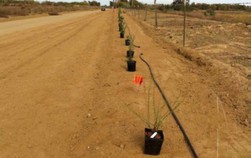
CASE STUDY #1:
Pollinator Conservation Brings Life
Back to California Farm
Driving through the farm fields of Colusa County in California's Central Valley is a good way to dispel any sentimental image of farmland as lush, pastoral, and nature-rich. Read More...
Pollinator Conservation Brings Life
Back to California Farm
Driving through the farm fields of Colusa County in California's Central Valley is a good way to dispel any sentimental image of farmland as lush, pastoral, and nature-rich. Read More...
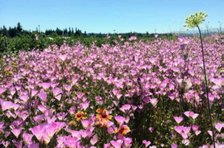
CASE STUDY #2:
Leveraging Existing Natural Areas
for Blueberry Pollination in Oregon
Brian and Rhoda Giblers's blueberry farm in Eagle Creek, Oregon resembles many mid-sized family berry farms in the region. A closer look, however, reveals something not found on many farms in the area...
Read More...
Leveraging Existing Natural Areas
for Blueberry Pollination in Oregon
Brian and Rhoda Giblers's blueberry farm in Eagle Creek, Oregon resembles many mid-sized family berry farms in the region. A closer look, however, reveals something not found on many farms in the area...
Read More...
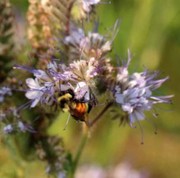
CASE STUDY #3:
Integrating Pollinator Habitat into Dryland Fields
Doug and Anna Crabtree of Vilicus Farms have already integrated huge, expansive wildflower buffers between their production fields. But they will tell you they are just getting started. They have a goal of integrating pollinator conservation areas across their entire operation. Read More...
Integrating Pollinator Habitat into Dryland Fields
Doug and Anna Crabtree of Vilicus Farms have already integrated huge, expansive wildflower buffers between their production fields. But they will tell you they are just getting started. They have a goal of integrating pollinator conservation areas across their entire operation. Read More...
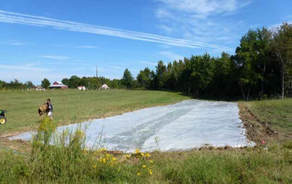
CASE STUDY #4:
North Carolina Farm Sets the Stage
for Pollinators with Crop Diversity
and Solarization
When Rob and Cheri Bowers set out to create their farm, they wanted to blur the lines between agriculture and nature. The result is Whitted Bowers Farm in Cedar Grove, North Carolina, a 52-acre farm using principles in an effort to foster pollinator and beneficial insect habitat across the entire farm landscape. Read More...
North Carolina Farm Sets the Stage
for Pollinators with Crop Diversity
and Solarization
When Rob and Cheri Bowers set out to create their farm, they wanted to blur the lines between agriculture and nature. The result is Whitted Bowers Farm in Cedar Grove, North Carolina, a 52-acre farm using principles in an effort to foster pollinator and beneficial insect habitat across the entire farm landscape. Read More...
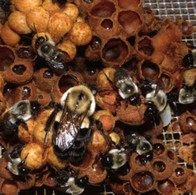
CASE STUDY #5:
Pollination Insurance for Massachusetts Cranberries
Knowing what we do about Colony Collapse Disorder and high winter honey bee losses, the vagaries of weather, the question of climate change, and the increase in competition for beekeepers to provide pollination services, would you buy a little pollination insurance if you could?
Read More...
Pollination Insurance for Massachusetts Cranberries
Knowing what we do about Colony Collapse Disorder and high winter honey bee losses, the vagaries of weather, the question of climate change, and the increase in competition for beekeepers to provide pollination services, would you buy a little pollination insurance if you could?
Read More...
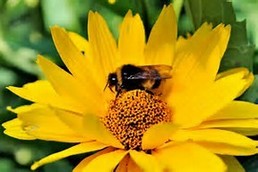
CASE STUDY #6:
Protecting Pollinators While Fighting an Invasive Pest
There is a strong history of conservation management in Mike Omeg's family. As the fifth generation to farm on his family's land, Mike takes the land's history, and its conservation, seriously.
Read More...
Protecting Pollinators While Fighting an Invasive Pest
There is a strong history of conservation management in Mike Omeg's family. As the fifth generation to farm on his family's land, Mike takes the land's history, and its conservation, seriously.
Read More...